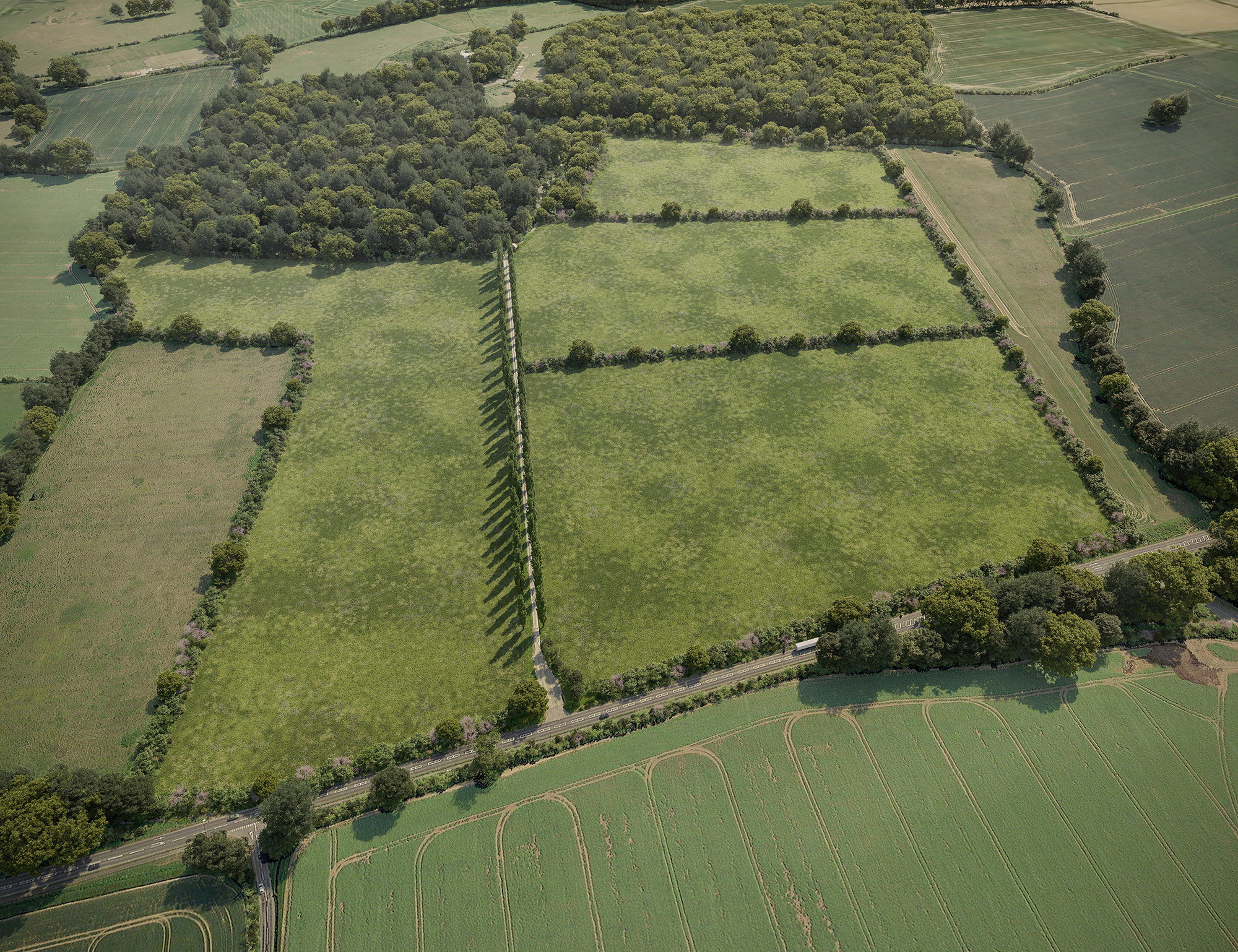How architects can leverage Biodiversity Net Gain (BNG)
BNG becomes a legal requirement on all new development from November 2023. It should be seen not as an ecological planning hurdle, but as a powerful tool to promote smart and sustainable design.
BNG is the principle that all developments must leave their site ‘measurably’ better for biodiversity than before.
Under the 2021 Environment Act, the simple requirement to increase measurable biodiversity from a development in the round by at least 10 per cent - according to a habitat-based metric set out by DEFRA - gives developers and their design teams an opportunity to help reverse the damage to the environment before it’s too late. In the past five decades alone, the UK has seen a 60 per cent decline in biodiversity.
BNG is already being implemented through local planning policy in many local planning areas across the UK to minimise biodiversity loss, ensure an overall gain in biodiversity value and enhance green space and biodiversity in all developments for the benefit of those who live, work and play in them.
To achieve this, architects, master planners and wider design and consultancy teams must consider how an intelligent site layout can meet these aims while maintaining site viability.
The Biodiversity Metric tool
The Biodiversity Metric is an invaluable tool in supporting this smart and iterative design process.
Instead of being a calculator that is applied once a design has been formulated, it can be used to support decision-making around a layout, thereby helping a developer to adhere to the mitigation hierarchy, minimise biodiversity impacts and maximise the developable area.
All design teams will seek to deliver functionality, landscape character and good place-making through multifunctional solutions, creative thinking and compromises until the numbers stack up. But with development pressure on land in England at an all-time high, maximising the developable area is also critical. Finding a balance between green space and urban footprints can be a constant challenge.
Inevitably, not all sites can reach the required net gain within their boundaries, so seek to compensate for biodiversity impact offsite through additional land purchase, bespoke land agreements with third parties or by buying Biodiversity Units from an offsite provider such as Environment Bank.

Wood Farm, Emberton, Milton Keynes – before Habitat Bank creation

Visualisation of Wood Farm once established
How Environment Bank can help
Great sustainable design incorporates green and blue infrastructure with an enhanced public realm, providing access to nature and supporting biodiversity.
But use of natural green space within development schemes is not always compatible with maximising the biodiversity value of land. Some habitat types and species are sensitive to regular disturbance and require conservation management techniques that are not feasible within a busy development site, for example grazing.
Further, natural spaces are not always aesthetically what residents or users want to see and small fragmented and highly disturbed habitats can offer limited value. It isn’t surprising that for many developments, squeezing in the project footprint alongside an overall increase in biodiversity value is unrealistic and unachievable.
The reality is often that, even when high value habitats have been retained, created or enhanced on a site, there is still a residual deficit in biodiversity that must be met elsewhere.
Environment Bank provides a simple, auditable, compliant and risk-free solution to meet that deficit.
Through establishing a national network of Habitat Banks, Environment Bank has launched BNG Units. This pioneering product enables effective compliance with mandatory BNG requirements by giving developers nationwide access to offsite Biodiversity Units across the UK - now.
Habitat Banks are landscape-scale nature recovery projects that deliver a measurable uplift in biodiversity value by establishing high quality semi-natural habitats. In line with best practice ecological principles, Habitat Banks offer bigger, better and more joined up nature recovery solutions, ensuring the best outcomes for nature. The uplift is measured by the Biodiversity Metric and translates into BNG Units that developers can buy to meet BNG planning requirements.
Environment Bank estimates there could be demand for as many as 6,200 offsite BNG Units each year, with an estimated market value of £135 million. The price of each BNG Unit will vary regionally and by habitat type, but is estimated at £20,000 to £25,000.
“We are investing more than £220 million in these amazing places for nature to recover and thrive, as well as providing much needed investment in rural communities,' says Emma Toovey, Environment Bank’s director of ecology.
"We can then use the BNG rules to turn these habitats into a ready supply of BNG Units that developers are already using to deliver their BNG requirements. It’s a simple model that allows the developer to pay and walk away “risk free”. It is fully compliant with planning rules and offers supply and cost certainty to the developer. We believe that the costs of transforming the plight of nature in this country is less than 0.5 per cent of the overall project value of a typical development.
"BNG is enabling a private market that brings economic visibility to biodiversity restoration and delivers brilliant ecology outcomes alongside solutions to unlock sustainable development across the country.”
The benefits of early engagement
Implementing BNG onsite and offsite can be challenging and requires ample and early site planning alongside expert ecological advice, but it has many potential rewards for all involved parties:
- Architects, developers and project partners can minimise their biodiversity impact, reduce their need for offsite BNG solutions and maximise their developable areas if they engage with BNG and use the Metric early and iteratively in their journey towards planning consent.
- Creates an opportunity for genuinely innovative design in which many benefits can be overlaid in the same space.
- Experienced ecologists can say what habitats should and can feasibly be retained and managed within the site and propose appropriate habitat creation proposals.
- They will also be able to advise on how the landscaping and green space designed into a scheme can be adapted and managed to maximise any possible biodiversity gains while meeting wider environmental needs such as noise abatement, flood retention or recreational space.
A long-term Habitat Management Plan, to be funded and implemented for at least 30 years, would need to be developed for all habitats that are to contribute to BNG calculations.
The risk of not engaging early in BNG is that any on-site deficit cannot easily be brought to the programme offsite, leading to a need to buy the government’s statutory credits, which will be purposely priced to be uncompetitive against market value.
Early engagement with ecologists, BNG tools and application of the mitigation hierarchy reduces biodiversity impacts, enables high quality sustainable design, manages consenting risks and protects project viability.
Are you an architect looking for more info on how BNG can inform site design?
We've teamed up with the RIBA Journal to bring you an exclusive webinar during which we will examine the legal implications for designers and how BNG can inform better site design to minimise environmental impact.

